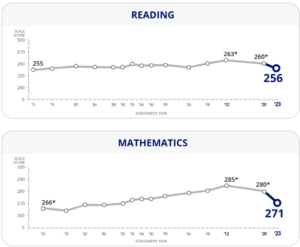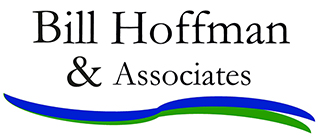The National Assessment of Educational Progress (NAEP) or the “Nation’s Report Card” results were recently released, and the results should be a wake up call. It was hoped that K-12 student academic performance would recover from the pandemic, but results continue to go down. This blog won’t go into the details – that would take more space than available. But this is a reflection that there isn’t more public outrage at the results. Somehow it appears acceptable that over half of 4th graders cannot read on level and that math proficiency is even lower. In fact, there are a multitude of apologists who take solace in the fact that their state is “#4 in the nation” in one metric or another. Being #4 on a sinking ship is nothing to brag about and should not make anyone feel better.
released, and the results should be a wake up call. It was hoped that K-12 student academic performance would recover from the pandemic, but results continue to go down. This blog won’t go into the details – that would take more space than available. But this is a reflection that there isn’t more public outrage at the results. Somehow it appears acceptable that over half of 4th graders cannot read on level and that math proficiency is even lower. In fact, there are a multitude of apologists who take solace in the fact that their state is “#4 in the nation” in one metric or another. Being #4 on a sinking ship is nothing to brag about and should not make anyone feel better.
Sadly, in my state of Florida there is no official acknowledgment of the poor performance, but on the same day as the NAEP scores were released there was a “feel good” press release about how incremental student assessments were “looking good”. It should be just as alarming that in a state where 45% of 3rd graders are not reading on grade level, somehow 90% are graduating high school. How much fidelity can there be in this system? It might “feel good” that a high percent of students is getting a diploma, but it begs the question of how valuable are those diplomas.
It all comes down to not being brave enough to set high expectations for students and then provide the tools, support, and skilled teaching to help the students be successful. Students, like adults, will rise to the level of expectations. It’s not always easy, but taking the easy way out is what’s gotten us in this situation in the first place.

